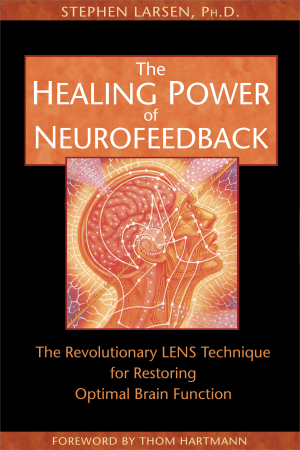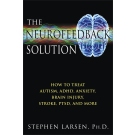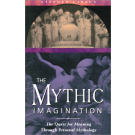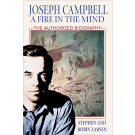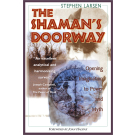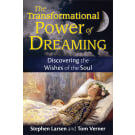The Healing Power of Neurofeedback
The Revolutionary LENS Technique for Restoring Optimal Brain Function
- Pages: 456
- Book Size: 6 x 9
- ISBN-13: 9781594770845
- Imprint: Healing Arts Press
- On Sale Date: April 21, 2006
- Format: Paperback Book
- Illustrations: Includes 8-page color insert and 21 b&w illustrations
An introduction to the innovative therapy that restores optimal functioning of the brain after physical or emotional trauma
• Provides an alternative to the more invasive therapies of electroshock and drugs
• Shows how this therapy helps ameliorate anxiety and depression as well as childhood developmental disorders
• Includes extraordinary case histories that reveal the powerful results achieved
According to the Centers for Disease Control, each year 260,000 people are hospitalized with traumatic brain injuries. The Brain Injury Association reports 1.5 million injuries, many of which go undiagnosed but which lead to all kinds of cognitive and emotional impairments. While neuroscience has learned an enormous amount about the connection between brain trauma and personality changes, the methods proposed for resolving these alterations are generally limited to drug therapy or surgeries.
This book explores a much less invasive but highly effective technique of restoring brain function: the Low Energy Neurofeedback System (LENS). Developed by Dr. Len Ochs in 1992, it has had extraordinary results using weak electromagnetic fields to stimulate brain-wave activity and restore brain flexibility and function. The treatment works across a broad spectrum of human activity, increasing the brain’s abilities to adapt to the imbalances caused by physical trauma or emotional disorders--both on the basic level and in the more subtle areas of cognitive, affective, and spiritual processes that make us truly human. While the treatment has had remarkable results with individuals who have experienced severe physical trauma to the head and brain, Stephen Larsen sees it also as an important alternative to chemical approaches for such chronic behavioral disorders as ADHD and monopolar and bipolar depression.
from Chapter Four
Healing the Mind of Childhood
Cerebral Palsy, Autism and Asperger’s Syndrome, Reactive Attachment Disorder, ADD/ADHD and LD, Childhood Traumatic Brain Injury (TBI)
Curtis Cripe, Ph.D., Sarah Harber, M.A., Stephen Larsen, Ph.D., Theresa Yonker, M.D.
“Why does my brain come in colors?”
Four-year-old Paul (on first seeing his brain map)
This chapter explores one of the most rewarding aspects of neurofeedback: working with children. We discuss working with children as young as six months, all the way through childhood and puberty, to the later teenage years. The sensitive, less fully formed nervous system of the child responds beautifully to the LENS.
Diagnostic categories covered include the Autistic spectrum (including Asperger’s Syndrome), ADD and ADHD, PDD (Pervasive Developmental Disorder), CP (Cerebral Palsy), RAD (Reactive Attachment Disorder--an awful condition of neglected, abused, or abandoned children), OCD (Obsessive-Compulsive Disorder) and other anxiety disorders, Oppositional Defiance, and Impulsive Disorders.
We usually tell parents that we are probably not going to cure their child’s problem. We may, however, help them to be more flexible, adaptable, and to learn better. These are not, in fact, small things for the parents of Autistics who have to mix in society and have their children educated in some school or other social situation. As we have already shown, the LENS seems to increase cortical flexibility, decrease rigid and inflexible adaptations, and harmonize and balance the activity of the CNS. When fully explained to them, they usually like the idea that we do not try to “micromanage” their child’s brain, nor drug or brainwash them. Unlike protocols that either deliberately attempt to speed up or slow down the brain, LENS lets the child’s brain do its own regulating.
The LENS is uniquely suited to work with infants and very young children because of its passive nature. There is nothing that needs to be understood, or even communicated verbally, to the child, no “training protocol,” and, wonderful to say, no activity to succeed or fail at. This makes it the neurofeedback par excellence for these very young patients and for diagnostic categories normally thought of as very difficult to treat but with a clearly neurological basis, such as autism.
Over a complete course of treatment, the LENS can be combined with traditional neurofeedback, HeartMath, Interactive Metronome, expressive arts--such as clay, painting, or sand play--as well as other cognitive and behavioral approaches. In general, we like to do the LENS work first, because then the nervous system of the child is more amenable to new learnings. The metaphor that keeps coming to mind is Biblical: new seeds sown on fertile rather than “hard” ground are more likely to sprout!
Unfolding Jessica: Cerebral Palsy in a Three Year Old
Jessica is three years old and diagnosed with moderate cerebral palsy (CP). The origins of her problem are unknown, but there was heavy crop spraying where her parents lived when she was perinatal. She was born with a rotated brain stem, the left portion of which was shrunken but not totally missing, and a very small left cerebellar lobe. She was a late birth with a disintegrated placenta, and a thick white film present over her whole body.
Though beautiful, with delicate features and blond hair, when Jessica was brought to the office, she showed a severe right hemiplegia; her head was skewed to the right, as in tortocollis, the right eye seemed permanently shut, and her right hand was stiff and spastic, used as a claw, when used at all. She had low energy for a three year old, and woke frequently at night. She was able to crawl with assistance. She did not have language, but with the help of a weekly speech therapist had been able to speak in one-word utterances accompanied by pointing. Her disabilities were thought to be permanent and irremediable, but the family had been doing Feldenkrais exercises with her since about six months of age. We are pretty sure this gentle muscular and neural stimulation paved the way for the amazing results.
Sessions were begun twice a week, the parents having been warned to look for the signs of overdose--i.e., tired or wired. Jessica was treated at four sites per session, moving along the Total Amplitude site sort, and stimulated at +5 for six seconds, a twelve second pause, and then a stimulation at +10 for six seconds (total of 12 sec. per site = 24 sec. total).
After session one, her mother reported that she started speaking in two- to three-word--but complete--sentences for the first time ever: “I wan’ dat!” “Dat bear mine!” Sleep improved. Jessica was exploring new ways of using her right hand.
After session two she was reported sleeping very well--best ever.
After session three she was noticed picking things up with her right hand. She had much more energy. Her grandparents noticed that she was more alert--they said it was “a striking difference.”
After session four Jessica began doing somersaults. She crawled over to the ottoman, pulled herself up and walked around it, and after that breakthrough began regular “couch cruising.” Now she was usually speaking in three-word utterances. Her speech therapist was thrilled. Jessica sang “Twinkle, Twinkle Little Star” completely unassisted (first time ever). To her parent’s astonishment and mild shock, she pulled herself up the facade of the TV and turned it off with her right index finger manipulating the knob (she seemed to already know just where the device was to be turned off!). Her parents reported at this point that her energy now seemed a little daunting--she was becoming like any other three year old!”
Acknowledgments
Foreword by Thom Hartmann
Foreword by Len Ochs, Ph.D.
Introduction: Flexible Brain, Quiet Mind
1 The LENS in Clinical Practice
• Stephen Larsen, Ph.D.
2 A Brief History of EEG Neurofeedback
• Stephen Larsen, Ph.D.
3 The Development of the LENS approach
• Stephen Larsen, Ph.D. and Kristen Harringtom, M.A., M.F.T., A.I.B.T.
4 Traumatic Brain (TBI) and Spinal Injury and LENS
• Stephen Larsen, Ph.D., Mary Lee Esty, L.C.S.W., Ph.D., and Len Ochs, Ph.D.
5 Healing the Mind of Childhood: Cerebral Palsy, Reactive Attachment Disorder, Autism, Asberger's Syndrome, ADD/ADHD and Learning Disabilities
• Sarah Franek, M.T.P., Stephen Larsen, Ph.D., Theresa Walker, M.D., Curtis Cripe, Ph.D, Mary Lee Esty, L.C.S.W., Ph.D., and Len Ochs, Ph.D.
6 The Twilight Zone: Fibromyalgia, Lyme Disease, and Chronic Fatigue Syndrome
• Stephen Larsen, Ph.D., Len Ochs, Ph.D., and Mary Lee Esty, L.C.S.W., Ph.D.
7 High Anxiety, Deep Depression: Panic, Obessive-Compulsive Disorders, Anxiety, Phobia, Depression, and Bipolar Disorder
• Stephen Larsen, Ph.D., Len Ochs, Ph.D., Karen Schultheis, Ph.D., Evelyn Soehner, M.A., Thomas E. Fink, Ph.D., and Lynn Brayton, Psy.D.
8 The Divine Madness: Epilepsy, Explosive Disorders, Tourette's Syndrome, and Tics
• Stephen Larsen, Ph.D., Karen Schultheis, Ph.D., and Len Ochs Ph.D.
9 Life Hurts: Post Traumatic Stress Disorder, Pain, and Bereavement
• Stephen Larsen, Ph.D.
10 Brain Attack: Aneurysm, Stroke, Alzheimer’s Disease, Parkinson’s Disease, and Headache
• Joan Piper Mader, M.A. and Beth Hanna, R.N.
11 Aternative Approaches to Evaluation and Treatment Using the LENS Perspective
• Stephen Larsen, Ph.D., Len Ochs Ph.D., Karen Schultheis, Ph.D., and Mary Lee Esty, L.C.S.W., Ph.D.
12 The LENS and other Modalities: Psychotherapy, Conventional Biofeedback/Neurofeedback, Heartmath, Photonic Stimulation, Interactive Metronome, Deep Vascular Relaxation, Nutritional Support, Sudershan Kriya Yoga, Qi Gong, and Open Focus
• Stephen Larsen, Ph.D., Wendy Behary, L.C.S.W., and Len Ochs Ph.D.
13 Speculations on Physics, Energy Psychology, Chaos Theory, and Magnetite in the Brain
• Stephen Larsen, Ph.D. and Evelyn Soehner, M.A.
14 The LENS with Animals: Improving the Behavior, Temperment, and Flexibility of Horses, Dogs, and Cats
• Stephen Larsen, Ph.D., Sloan Johnson, M.A., Robin Larsen, Ph.D., and Carla Adinaro, A.R.I.A.
15 Postscript: The Tao of LENS: Positive Psychology and Optimal Performance
• Stephen Larsen, Ph.D.
Notes
Bibliography
Glossary of Acronyms
Glossary of Diseases/Conditions
Glossary of Healing Modalities
Resources
About the Contributors
Index
"Health & Science News," The Week
“Kudos to Stephen Larsen for the accomplishment of a superb book that chronicles the development of a technique that will revolutionize mental health care . . .”
Siegfried Othmer, Ph.D., Aug. 18, 2006
". . . an important alternative to chemical approaches for such chronic behavioral disorders as ADHD, and monopolar and bipolar depression."
Aznet News, Oct-Nov 2006
"If you're looking for new ways to treat old problems you will find this an invaluable resource."
Rahasya Poe, Lotus Guide, Nov-Dec 2006
“This is a book that should be on the bookshelf of every primary care physician, neurologist, neurosurgeon, pain management specialist, psychologist, and clinical social worker. This book is a must-read for anyone who has had a history of head trauma (who hasn't?), as well as anyone who knows someone with chronic fatigue, fibromyalgia, ADD, or autism.”
Richard A. Bernstein, M.D., FCCP
". . . offers a new methodology which may be of help to a wide variety of conditions for which there has previously been little hope."
Mark A. Lawrence, M.D., May 2007
“A superb book that chronicles the development of a technique that will revolutionize mental health care.”
--Siegfried Othmer, Ph.D., BCIAC, chief scientist of the EEG Institute
According to the Centers for Disease Control, each year 260,000 people are hospitalized with traumatic brain injuries. The Brain Injury Association reports 1.5 million injuries annually, many of which go undiagnosed but which can lead to various cognitive and emotional impairments. Traditionally the methods for resolving these impairments have been limited to drug therapy or surgery.
This book explores an alternative, highly effective technique of restoring brain function: the Low Energy Neurofeedback System (LENS). Developed by Dr. Len Ochs in 1992, it has had extraordinary results using weak electromagnetic fields to stimulate brain-wave activity and restore brain flexibility and responsiveness. The treatment works across a broad spectrum of human activity--both on the basic functional level and in the more subtle areas of cognitive, affective, and spiritual processes that make us truly human. While the LENS treatment has had remarkable results with individuals who have experienced severe physical trauma to the head and brain, psychotherapist and neurofeedback researcher Stephen Larsen also sees it as an important alternative to chemical approaches for such chronic behavioral disorders as anxiety, ADHD, monopolar and bi-polar depression, and childhood developmental disorders. The Healing Power of Neurofeedback chronicles the development of this groundbreaking technique and includes case histories that demonstrate the validity of this dynamic, emerging healing modality.
STEPHEN LARSEN, PH.D., is Psychology Professor Emeritus at SUNY Ulster and the author of The Shaman’s Doorway and The Mythic Imagination and coauthor of Joseph Campbell: A Fire in the Mind. He has been using the LENS clinically since 1996 and biofeedback since 1975 in his psychotherapy practice. He directs the Stone Mountain Center for Counseling and Biofeedback near New Paltz, New York.



